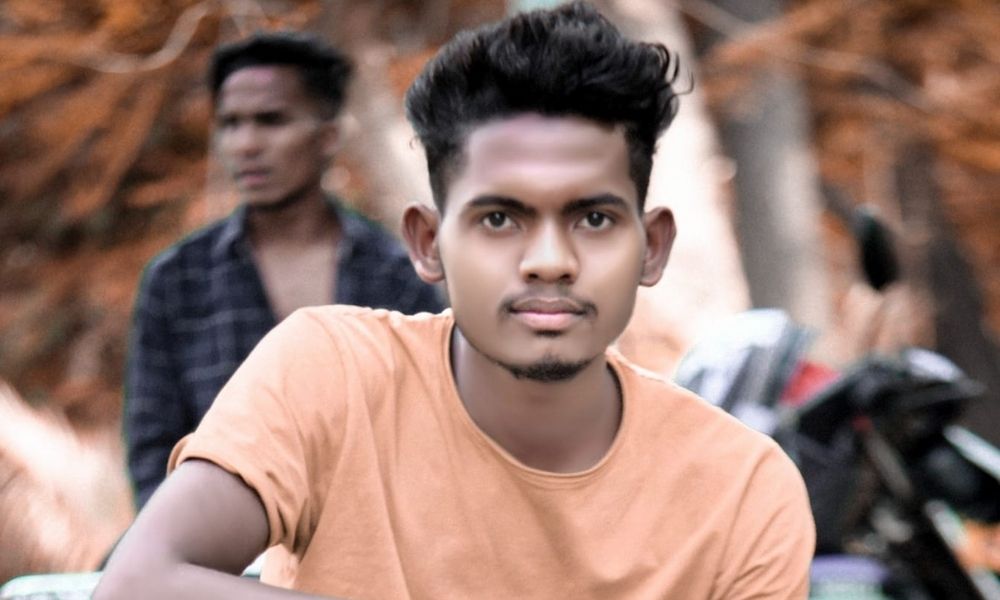
Image Credit: Facebook/ Nabin Saunta
This 21-Yr-Old From Odisha Is A Beacon Of Hope For The Tribal Community
Writer: Ratika Rana
Her primary objective is to inform, promote, educate and cultivate readers through writing.
Odisha, 30 July 2021 4:20 AM GMT | Updated 30 July 2021 4:25 AM GMT
Editor : Madhusree Goswami |
A mountain girl trying to make it big in the city. She loves to travel and explore and hence keen on doing on-ground stories. Giving the crux of the matter through her editing skills is her way to pay back the journalism its due credit.
Creatives : Ratika Rana
Her primary objective is to inform, promote, educate and cultivate readers through writing.
Hailing from a remote village in Koraput district, Nabin Saunta is the first one in his family to study science and is now pursuing a degree in computer science.
Twenty-year-old Nabin Saunta from Odisha is a beacon of hope for the tribal people in his state. In a society where education is not easily accessible to the tribals, people like Saunta are helping bridge the gap by working towards providing inclusive education for people and equipping them with work-life skills. Lately, the state has been witnessing a lot of youth migrating to the neighbouring states of Andhra Pradesh and Telangana for better educational and professional prospects. However, the grass is not necessarily greener on the other side as, in many instances, youngsters are duped by their supervisors and are paid less or no wages at all.
Primary Sources Of Income Were Agriculture And Forest Produce
Down To Earth quoted Nabin Saunta saying that he was in grade IV when he saw a computer for the first time, and it was love at first sight for him. Inevitably he wanted to learn more about the device, and it was only after eight years that his dream started taking shape. Saunta belongs to the Kondh tribe in Odisha. The tribal village of Kinjariguda in Tunpur panchayat of Lakhimpur block under Koraput district lies 500 km from the state capital of Bhubaneshwar. The village has 150 households, a majority of whom belong to the Kondh community, and the remaining belong to scheduled caste and other backward communities. The primary sources of income are rainfed agriculture and the collection of forest produce. When Nabin completed his primary education, his father vaguely tried to get him admitted to a school. He argued that he attended school till class 3, and a number of his friends had never even set foot in a school. That was when a family friend told them that Kalinga Institute of Social Sciences (KISS) provided free education to more than 30,000 tribal children from kindergarten to post-graduation. A turning point was when Nabin's application was accepted into KISS. Proving his mettle, Nabin scored the first position in class XI and XII. He said, "It was the most memorable day of my life. I was the first one in my family to study science."
Now Nabin is pursuing an honors degree in computer science and hopes to become a software engineer and bring glory to his village. His mother, who never went to school, said that she had witnessed considerable change in her son's behaviour. Moreover, he took tuitions in the lockdown for village children to not lose touch with their academics.
The sarpanch of Goudaguda panchayat in Lakhimpur said, "Our youth are moving to cities. Our forest resources are getting depleted. Farming is not lucrative anymore. Rainfall is erratic". Around 20 youngsters from the village were stuck in Hyderabad in 2020 when the nationwide lockdown was imposed last year to contain the spread of COVID-19. The sarpanch said that the village people had heard terrifying stories of the youngsters' battle for survival when they had no money to buy food.
Schools- A Distant Dream
Access to quality education and infrastructure in the small schools of Koraput has remained more of a dream than a reality. Villages under the block lack internet connectivity, mobile network and regular electricity supply. The schools face a high dropout rate, teachers are often absent and a poor multi-lingual programme to eventually include the marginalized population. A study conducted by the National University of Education and Planning states that tribal schools across India are similar. Only 7 per cent of teachers in tribal schools communicated with the students in tribal languages.
The Central and state Governments have initiated several schemes and programs since Independence for tribal education. The establishment of Ashram schools, Eklavya Model Residential schools, Kasturba Gandhi Balika Vidyalaya, pre-matric scholarships and vocational training centres are a part of the government's development initiatives. A cordial relationship could reduce the gap between teachers and students. Mentors need to understand that the social and economic background of their tribal students would not be similar to that of non-tribal students. Thus, they would require extra personal attention. Mutual respect for their culture, values, traditions and beliefs is a crucial aspect to focus on.
On the first day of school of a tribal child, he is unaware of any other language than his mother tongue. Since they have limited contact with the state, they tend to speak in their dialect. Therefore, the use of tribal language in preceding years can develop into the child a feeling of belonging. The usage of their first language to acquire knowledge about the tribal culture, ethnicity, literature, and arts can form the basis of inclusive education.
Government Initiatives
The Ministry of Tribal Affairs (MTA) is responsible for mitigating educational scholarship schemes and tribal sub-schemes to empower and educate various underprivileged and marginalized ethnic groups. Crores are allocated for various projects like the Special Central Assistance To Tribal Sub-schemes and Grants under proviso to Article 275 (1) of the Constitution. As per details mentioned on the official website of MTA, scholarship is given to thousands of freshers every year. All the students selected are shortlisted on a merit basis by their marks scored during class XII. The scholarships will cover the entire duration of the course that the students decide to pursue. One critical criterion for acquiring the scholarship is that the family income from all sources must be below ₹ 6,00,000 per annum.
Intensive community participation and sensitizing the general public about the lack of facilities faced by the tribal people can be among the critical foundations of including several ethnic groups into the mainstream society. There is a pressing need for an integrated approach by the government, policymakers, civil society organizations and international development organizations to address chronic problems and allocate adequate funds towards tribal education in all the states.
Also Read: From Trash To Treasure: This Social Enterprise Transforms Waste Plastic Into Fabric Using Charkha
 All section
All section














